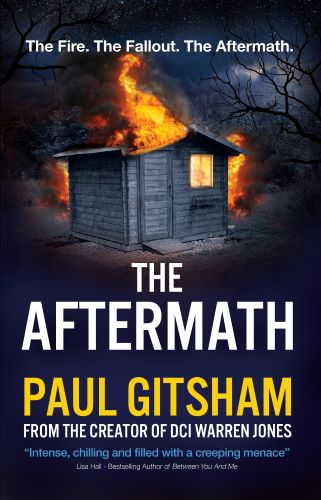Attributing More.
Revisiting Dialogue Tags.

Today’s #TuesdayTip is a continuation of last week’s post [#Tip166] about Dialogue Attribution, the words outside the speech marks that tell the reader who is speaking and how they are saying it.
As mentioned previously, dialogue attribution should be unobtrusive. For example the word ‘said’ is largely invisible to readers.
One of the biggest issues is knowing who is speaking – this is relatively straight forward if there are only two people. You can ditch attribution and just alternate between them, with a line-break each time.
But for lengthy exchanges, there needs to be a periodic reminder of who is talking, in case the reader loses track.
And remember to attribute if there is an intervening section of prose – who starts speaking first after an interlude?
(There are a couple of well-known authors who can be guilty of skipping the tags entirely in fast-paced exchanges. The characters alternate speaking like a volley in a tennis match. Unfortunately, if there are no distinguishing verbal traits to differentiate the characters, I have sometime found myself stopping and having to go back and mentally assign each line of dialogue to the relevant character, which ruins the flow of the scene).
It is essential to proof read the dialogue. Come back to it after a few weeks, or use beta readers and see if they lose track.
Methods for using attribution.
You can avoid stating that a person has started speaking by tagging dialogue to a character’s action. This is called a ‘beat’.
Warren looked over his shoulder. “Are you coming, or what?”
Keep the dialogue and beat in the same line with no line-break, and the reader will automatically realise who the dialogue belongs to. Again, some writers can be guilty of adding line-breaks to separate the action from the words (a good device to add tension or adjust pacing), but without a tag to tell the reader that the same person is speaking, the reader will assume it is someone else.
Another way to signpost who is speaking without tags is distinctive language for each character. Unfortunately, this isn’t always possible. Two cops, who come from entirely different parts of the country with different dialects, might nevertheless use the same language when discussing a case. Unfortunately, there are few easy ways to render their accent and dialogue on the page, unlike in an audio production where it is obvious to the reader when the narrator has switched to Scouse, rather than Irish.
Don’t say my name!
In real-life, we use each other’s names sparingly. Especially if there are only two people present. I can chat to my wife all night without either of us using the other’s name. Even in small groups, body language etc can mean that there is no need to address someone by their name; it’s obvious who we are speaking to. In the UK especially, we are famous for being introduced to someone, then weeks later, realising that we can’t remember their name, since we haven’t used it since. There are people I’ve known for years that I chat to whenever I meet them, but couldn’t tell you their name if you asked! Our American cousins are typically better than Brits, in part because they subconsciously use a person’s name repeatedly after meeting them for the first time, imprinting it in their memory. In the UK, ‘Hello, mate, how are you doing?’ would be a typical greeting! After a while, you’ve known a person so long it would be embarrassing to ask them their name again.
You can avoid using a name, by using pronouns for a couple eg he said/she said. Modern usage controversially means ‘they’ is now a non-gendered pronoun, not just a plural (fun fact, this usage actually goes back centuries, so pay no heed to ‘purists’ who criticise it – they are wrong). Other languages, such as German have a neutral pronoun built in.
You can also use descriptors, eg ‘the young man said’. But be sparing, and only use them for a bit of variety.
These are just a few examples of dialogue attribution and there is much else to be said on the subject. What are your thoughts on dialogue attribution? As always feel free to comment here or on social media. I may return to this subject in future.
Until next time,
Paul
If you are a writer with a tip to share, or fancy writing a fictional interview between you and one of your characters, please feel free to email me.
As mentioned previously, dialogue attribution should be unobtrusive. For example the word ‘said’ is largely invisible to readers.
One of the biggest issues is knowing who is speaking – this is relatively straight forward if there are only two people. You can ditch attribution and just alternate between them, with a line-break each time.
But for lengthy exchanges, there needs to be a periodic reminder of who is talking, in case the reader loses track.
And remember to attribute if there is an intervening section of prose – who starts speaking first after an interlude?
(There are a couple of well-known authors who can be guilty of skipping the tags entirely in fast-paced exchanges. The characters alternate speaking like a volley in a tennis match. Unfortunately, if there are no distinguishing verbal traits to differentiate the characters, I have sometime found myself stopping and having to go back and mentally assign each line of dialogue to the relevant character, which ruins the flow of the scene).
It is essential to proof read the dialogue. Come back to it after a few weeks, or use beta readers and see if they lose track.
Methods for using attribution.
You can avoid stating that a person has started speaking by tagging dialogue to a character’s action. This is called a ‘beat’.
Warren looked over his shoulder. “Are you coming, or what?”
Keep the dialogue and beat in the same line with no line-break, and the reader will automatically realise who the dialogue belongs to. Again, some writers can be guilty of adding line-breaks to separate the action from the words (a good device to add tension or adjust pacing), but without a tag to tell the reader that the same person is speaking, the reader will assume it is someone else.
Another way to signpost who is speaking without tags is distinctive language for each character. Unfortunately, this isn’t always possible. Two cops, who come from entirely different parts of the country with different dialects, might nevertheless use the same language when discussing a case. Unfortunately, there are few easy ways to render their accent and dialogue on the page, unlike in an audio production where it is obvious to the reader when the narrator has switched to Scouse, rather than Irish.
Don’t say my name!
In real-life, we use each other’s names sparingly. Especially if there are only two people present. I can chat to my wife all night without either of us using the other’s name. Even in small groups, body language etc can mean that there is no need to address someone by their name; it’s obvious who we are speaking to. In the UK especially, we are famous for being introduced to someone, then weeks later, realising that we can’t remember their name, since we haven’t used it since. There are people I’ve known for years that I chat to whenever I meet them, but couldn’t tell you their name if you asked! Our American cousins are typically better than Brits, in part because they subconsciously use a person’s name repeatedly after meeting them for the first time, imprinting it in their memory. In the UK, ‘Hello, mate, how are you doing?’ would be a typical greeting! After a while, you’ve known a person so long it would be embarrassing to ask them their name again.
You can avoid using a name, by using pronouns for a couple eg he said/she said. Modern usage controversially means ‘they’ is now a non-gendered pronoun, not just a plural (fun fact, this usage actually goes back centuries, so pay no heed to ‘purists’ who criticise it – they are wrong). Other languages, such as German have a neutral pronoun built in.
You can also use descriptors, eg ‘the young man said’. But be sparing, and only use them for a bit of variety.
These are just a few examples of dialogue attribution and there is much else to be said on the subject. What are your thoughts on dialogue attribution? As always feel free to comment here or on social media. I may return to this subject in future.
Until next time,
Paul
If you are a writer with a tip to share, or fancy writing a fictional interview between you and one of your characters, please feel free to email me.



















